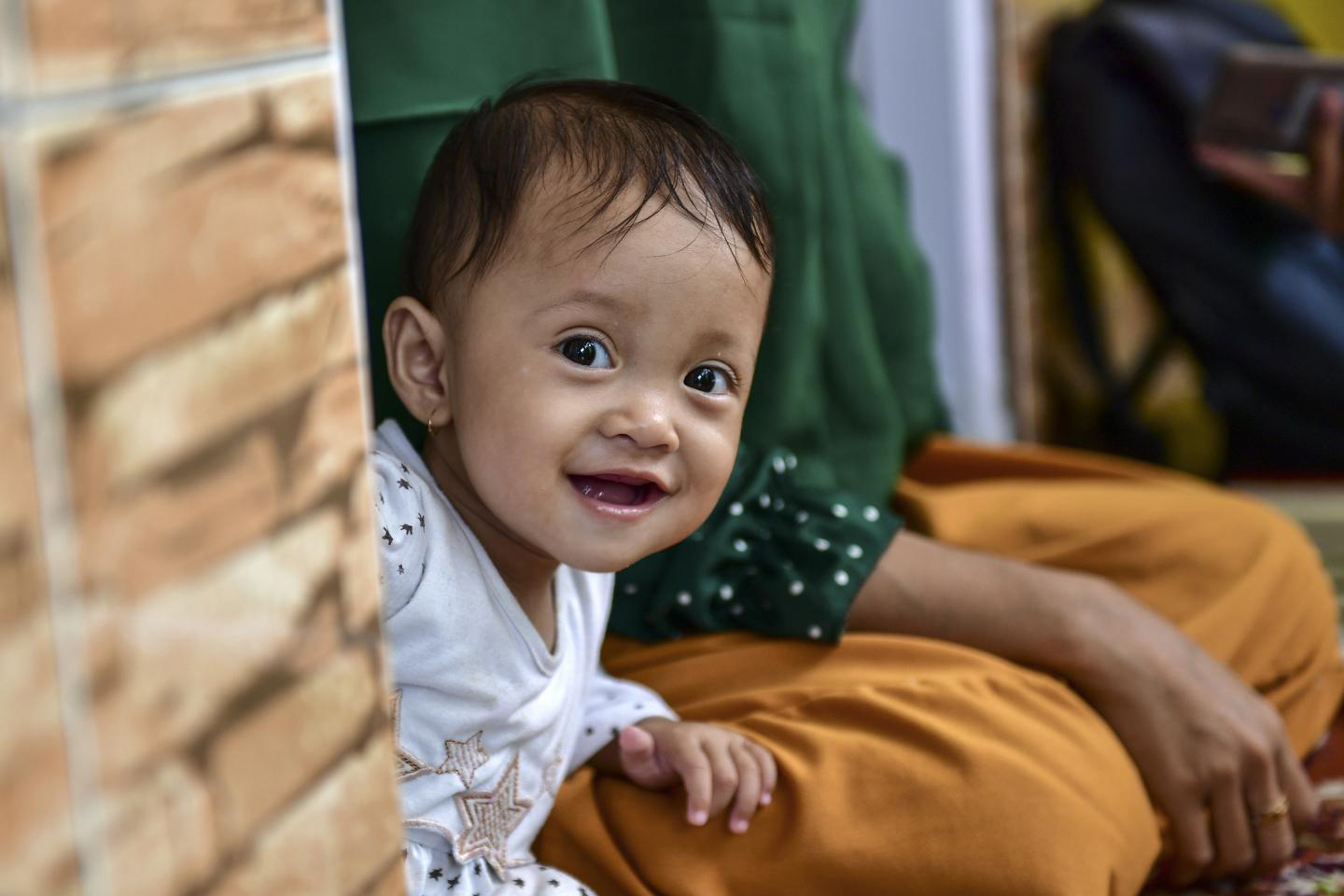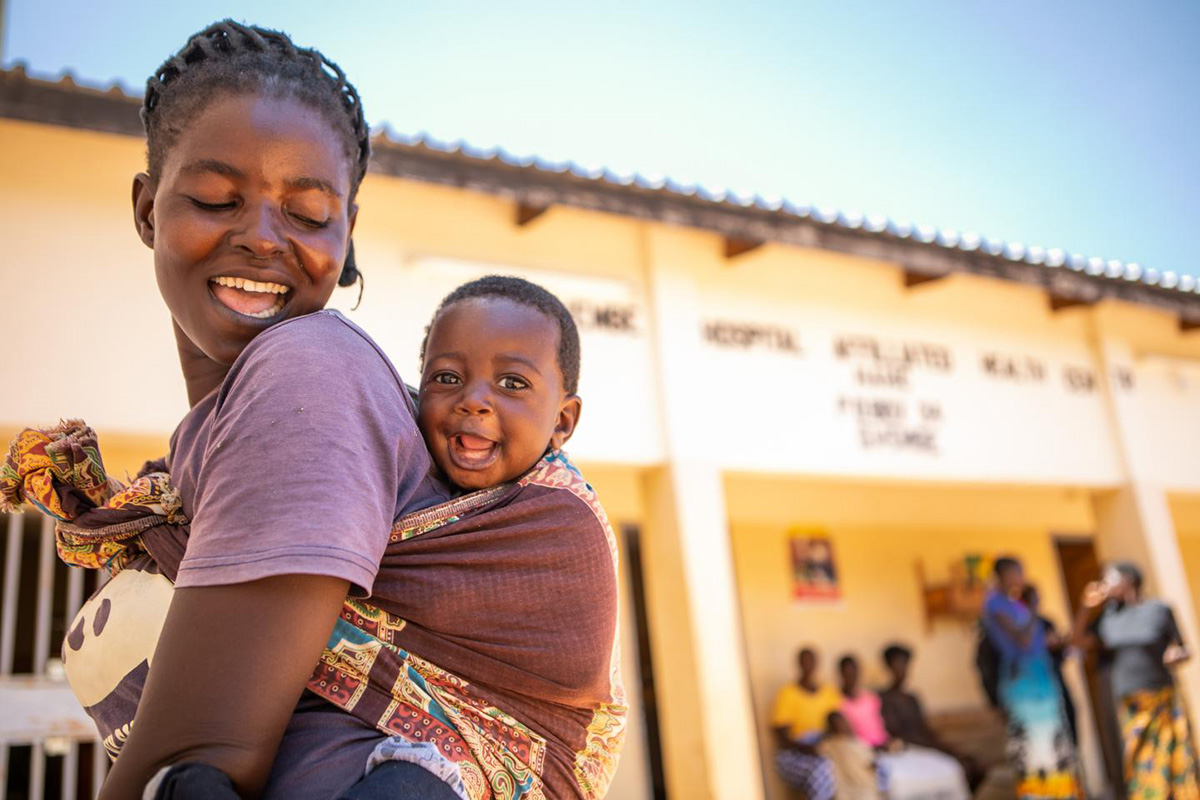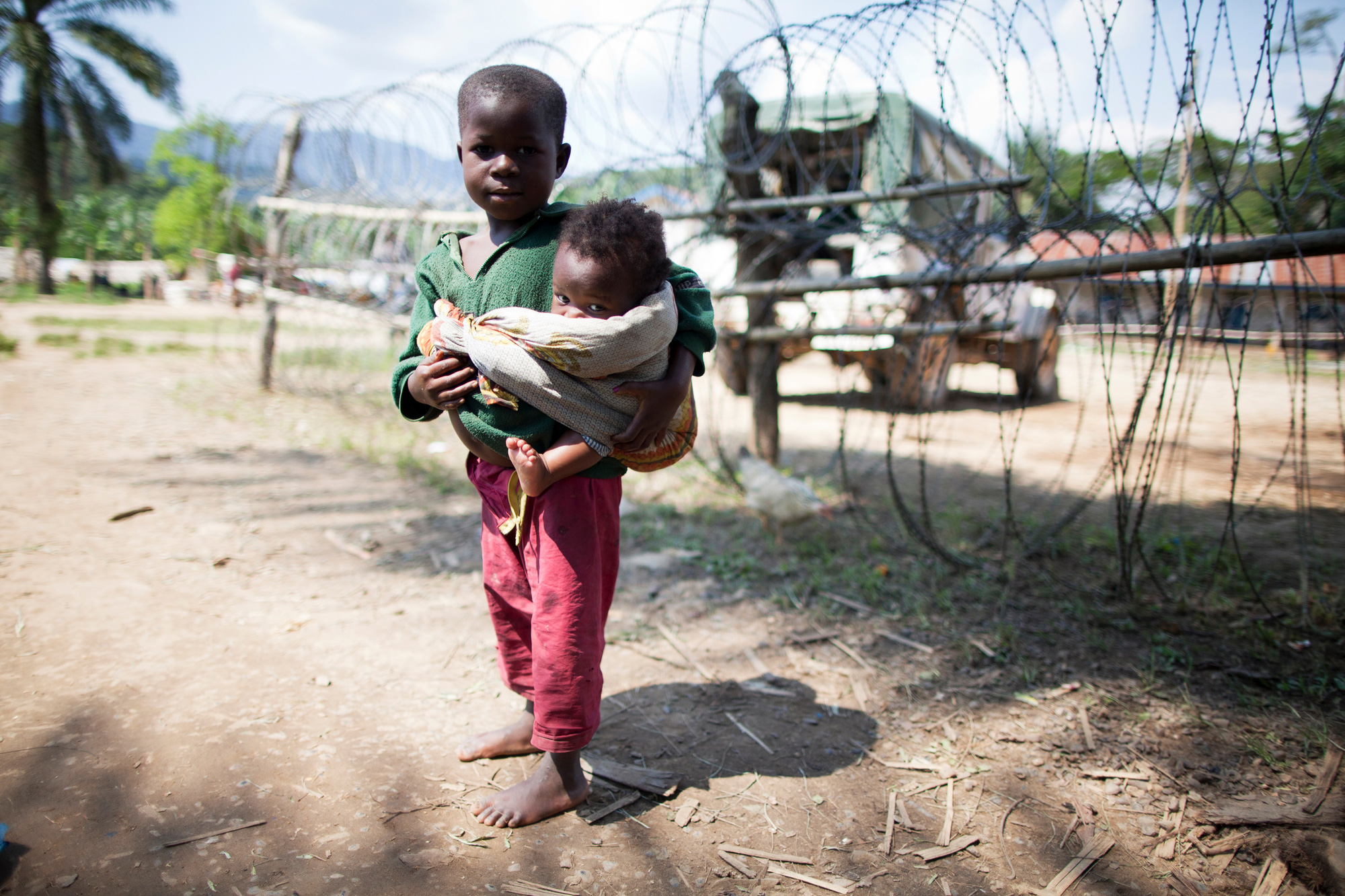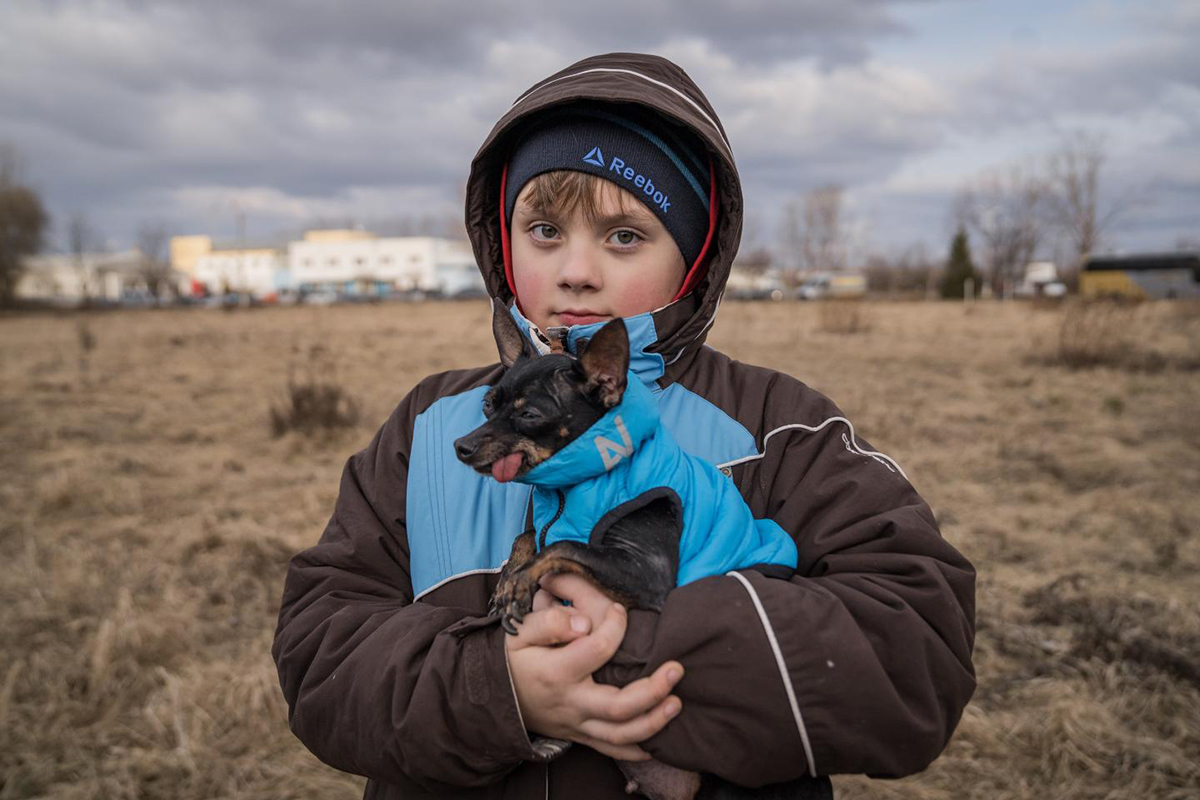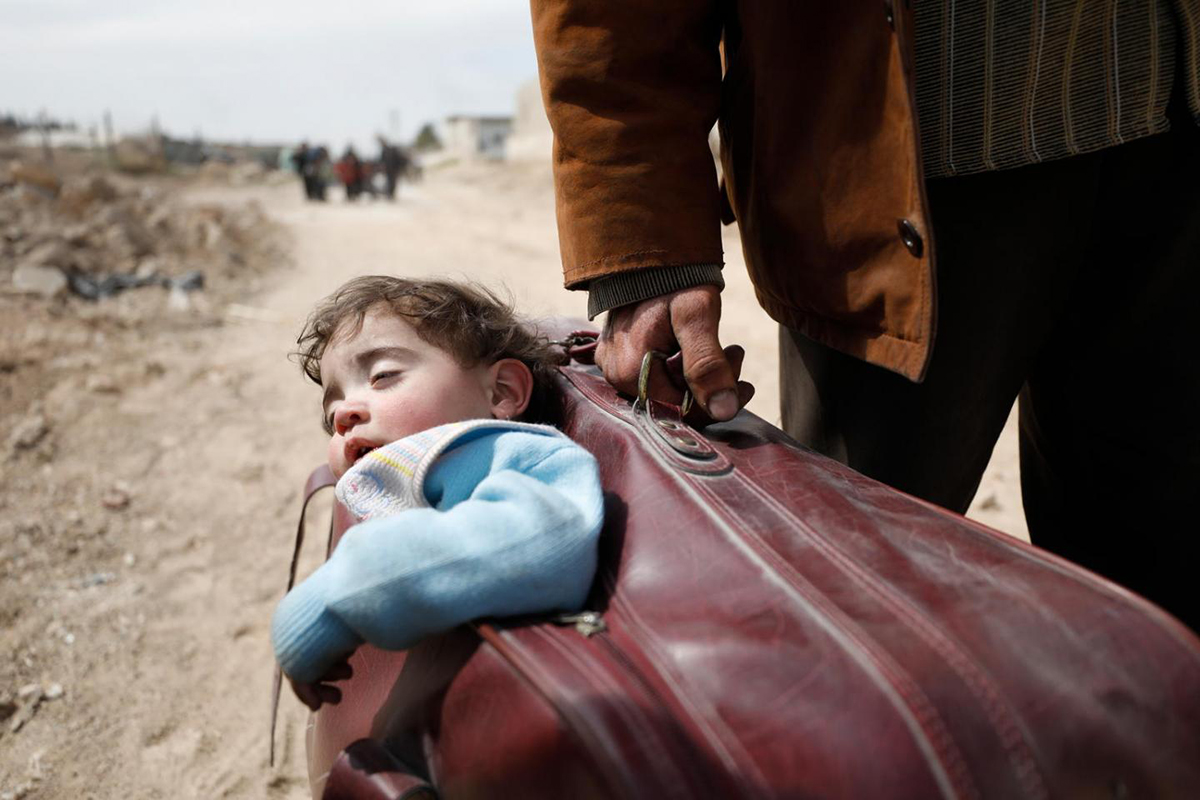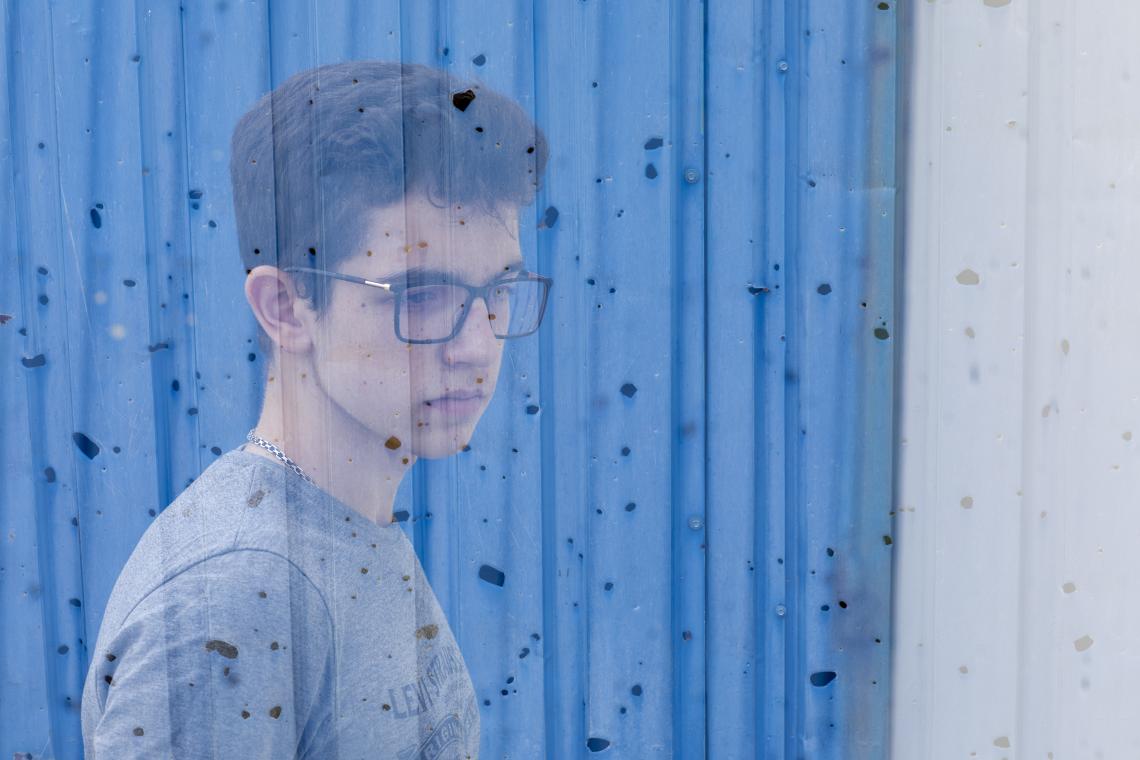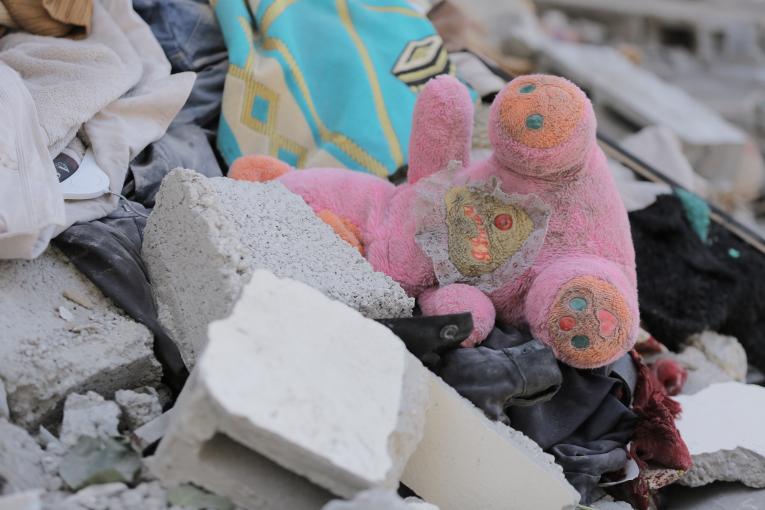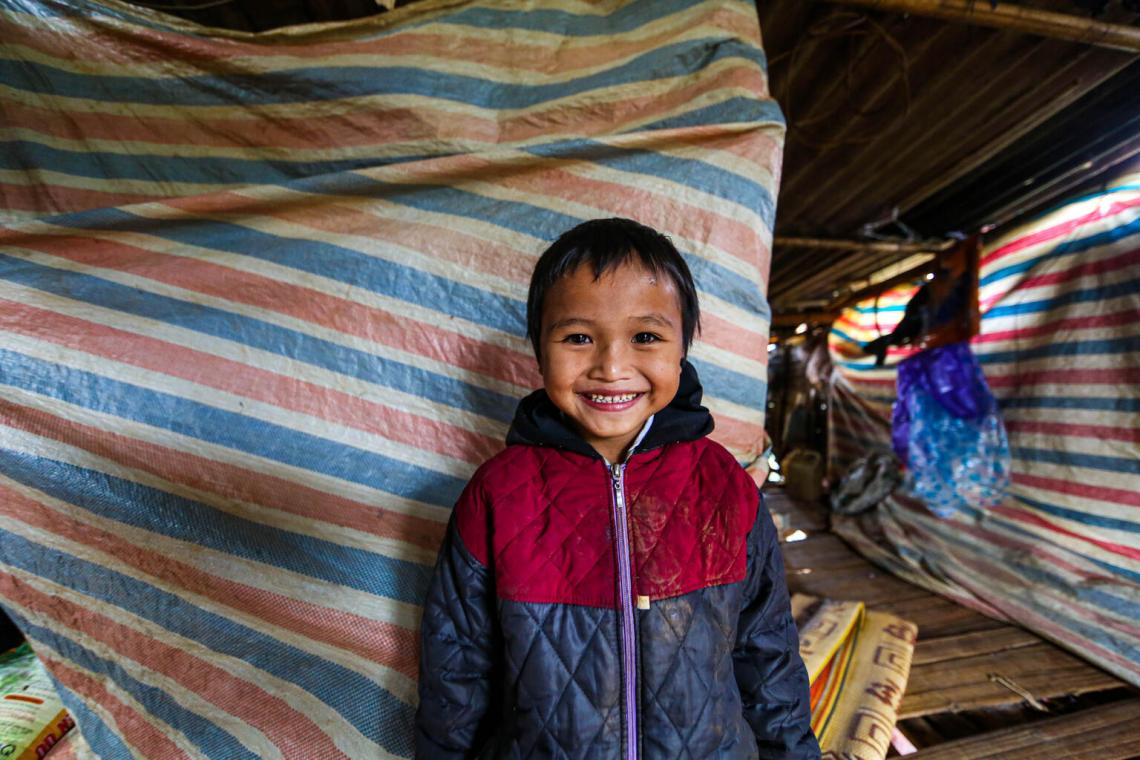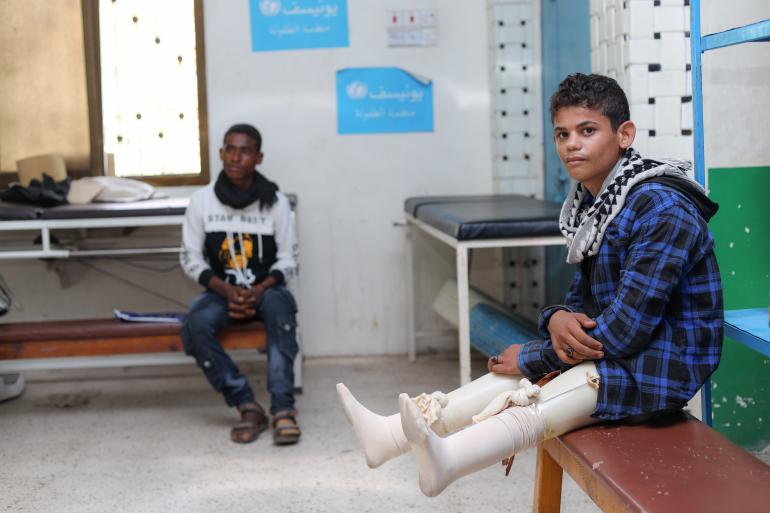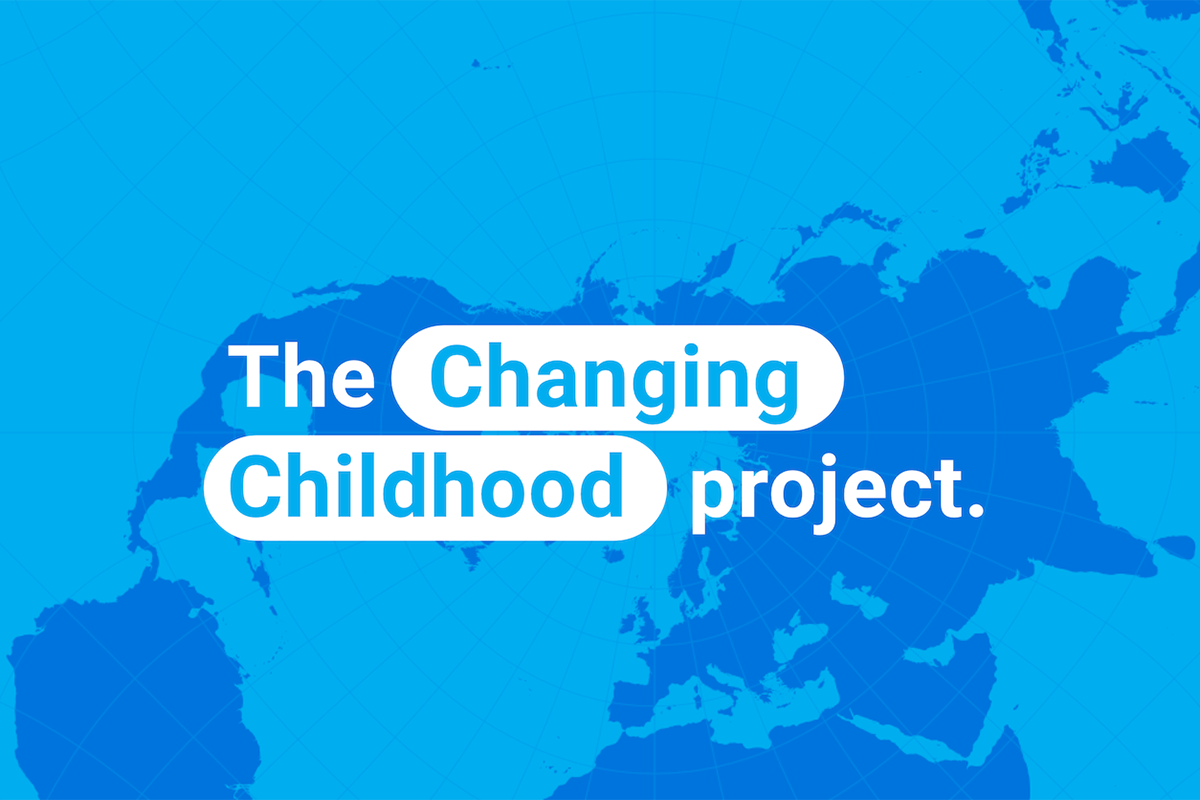Severe wasting, also known as ‘severe acute malnutrition’, is an excruciatingly painful condition – which is caused by a lack of nutritious food and repeated bouts of diseases such as diarrhoea, measles and malaria – that affects millions of children. Children with severe wasting are thin and frail. Their immune systems are weak, leaving them vulnerable to developmental delays, disease and death. UNICEF works with partners across the globe to support the early detection and treatment of children with wasting and other life-threatening forms of malnutrition.
Children
It is a sad reality that in situations where armed conflict breaks out, it is the most vulnerable members of societies – namely children, who are most affected by the consequences of war. During armed conflict, children may be forced to flee their homes, some torn from their families and exposed to exploitation and abuse along the way. They may be recruited by armed forces. Especially for girls and women, the threat of gender-based violence soars. On the International Day of Innocent Children Victims of Aggression the United Nations affirms its commitment to protect the rights of children.
Children are the most vulnerable in times of armed conflict. Wars and hostilities deprive them of their lives, families, homes, essentially from their very childhood. Despite the horrors they have endured, children have a chance to recover from atrocities and become positive agents of change in their communities. The photo exhibit “From Despair to Hope: Children Beyond Armed Conflict,” organized by the Office of the Special Representative of the Secretary-General for Children and Armed Conflict, aims at reflecting on the complexity of the lives of children amidst conflict, emphasizing both the tragedy and the faith in a better future.
It’s early morning and mothers and their children are arriving at the Family and Child Support Centre for young children from vulnerable families. Waiting inside are social workers who are getting ready to welcome the children. The centre in Istaravshan is one of four converted residential childcare institutions, known as Baby Homes in Tajikistan. With UNICEF’s support, the spaces have been transformed into family centres where vulnerable children can access community and family-based support without being institutionalized.
Hi kids! Come and join us for the last episode of Online Safety with Sango. In this episode we will talk about how to stay safe while watching videos on online! Stay safe, stay tuned, and engage online! Check out more Sango materials.
The war in Ukraine poses an immediate and growing threat to the lives and well-being of the country’s 7.5 million children. Humanitarian needs are multiplying by the hour as fighting intensifies. Children continue to be killed, wounded and deeply traumatized by the devastating violence all around them. Families are terrified, in shock, and desperate for safety. UNICEF is working with partners to reach vulnerable children and families with essential services – including health, education, protection, water and sanitation – as well as life-saving supplies.
Oleksandra's chilling video diary shows the grave dangers children and young people are facing in Ukraine. UNICEF and partners are working through COVID-19 and conflict to provide urgent support to families. They need peace now.
Amid growing international condemnation over Russia’s military offensive in Ukraine, tens of thousands of people are still trying to escape to neighbouring countries, fleeing en masse. This has brought huge numbers to the western Ukrainian city of Lviv, where UNICEF’s spokesperson James Elder has been giving an update on the emotional and tense scenes he’s witnessed, to UN News’s Daniel Johnson.
At the age of 13, Younis left school to help his family but suddenly found himself recruited into an armed group in Sudan. Younis managed to escape, and UNICEF and partners were there to help him reunite with his family and reintegrate safely back to his community. Through conflict , UNICEF is working across the world to release and reintegrate children recruited by armed groups.
Millions of children are on the move. Some are driven from their homes by conflict, poverty or climate change; others leave in the hope of finding a better life. Far too many encounter danger, detention, deprivation and discrimination on their journeys, at destination or upon return. UNICEF works around the world to help protect the rights of migrant and displaced children by providing life-saving humanitarian supplies in refugee camps. UNICEF also collects, analyses and disseminates data and gathers evidence about the situation and individual experiences of children on the move.
Fifteen-year-old Illia has no visible scars on his body from the shells and shrapnel that have fallen on his hometown in eastern Ukraine. They have left scars of a different kind. “I was standing in the kitchen when the shell hit us,” recalls the teenager. “In a split second there was an explosion. All I remember is that my ears were buzzing and I saw a yellow line of fire, then red, orange and fragments.” Over the years, his vision has deteriorated. Nights spent sheltering in a dark basement have only made it worse. And he is not alone – according to the United Nations Children’s Fund (UNICEF), the devastating conflict in eastern Ukraine is increasingly affecting children’s mental health, causing nightmares, social isolation and panic attacks. Nearly every child here is now thought to be in need of psychosocial support.
At an event to mark the occasion and to launch the 25th anniversary study, UNICEF's Executive Director, Henrietta Fore, said the mandate has achieved concrete results for children: "For example, since 2000, at least 170,000 children have been released from armed forces and armed groups, many having survived multiple violations – including abduction or sexual violence." The UN should continue to prioritize helping these children, who have suffered terrible violence, she added. "We should seize all opportunities to increase visibility and awareness of the terrible impact of conflict on children. We should be courageous in taking steps to end impunity and advance accountability for children in situations of armed conflict."
Ho Van Huy in central Viet Nam is happy to be drinking clean water. After storms and floods in the region affected nearly 2 million people in January, UNICEF provided emergency supplies, including water filters, to affected communities. Smiling is contagious and these happy children from around the world are sure to put a smile on your face! Find out what's been making them smile this year.
Grave violations of children’s rights in conflict are on the rise around the world, warns UNICEF. From Afghanistan to Yemen, and Syria to northern Ethiopia, thousands of children paid a devastating price as armed conflict, inter-communal violence, and insecurity continued. The first three months of 2021 saw a slight decrease in the overall number of verified grave violations; however, verified cases of abduction and sexual violence continued to rise at alarming rates - by more than 50 and 10 per cent, respectively, compared to the previous year.
We are living through an era of rapid and far-reaching transformation. As the world has changed — becoming more digital, more globalized, and more diverse — childhood is changing with it. The Changing Childhood Project — a collaboration of UNICEF and Gallup — was created to explore these shifts, and to better understand what it means to be a child in the 21st century. UNICEF asked young and older people in 21 countries what is it like to grow up in today’s world? And how do generations view the world differently? Dive in and discover the changing nature of childhood.

